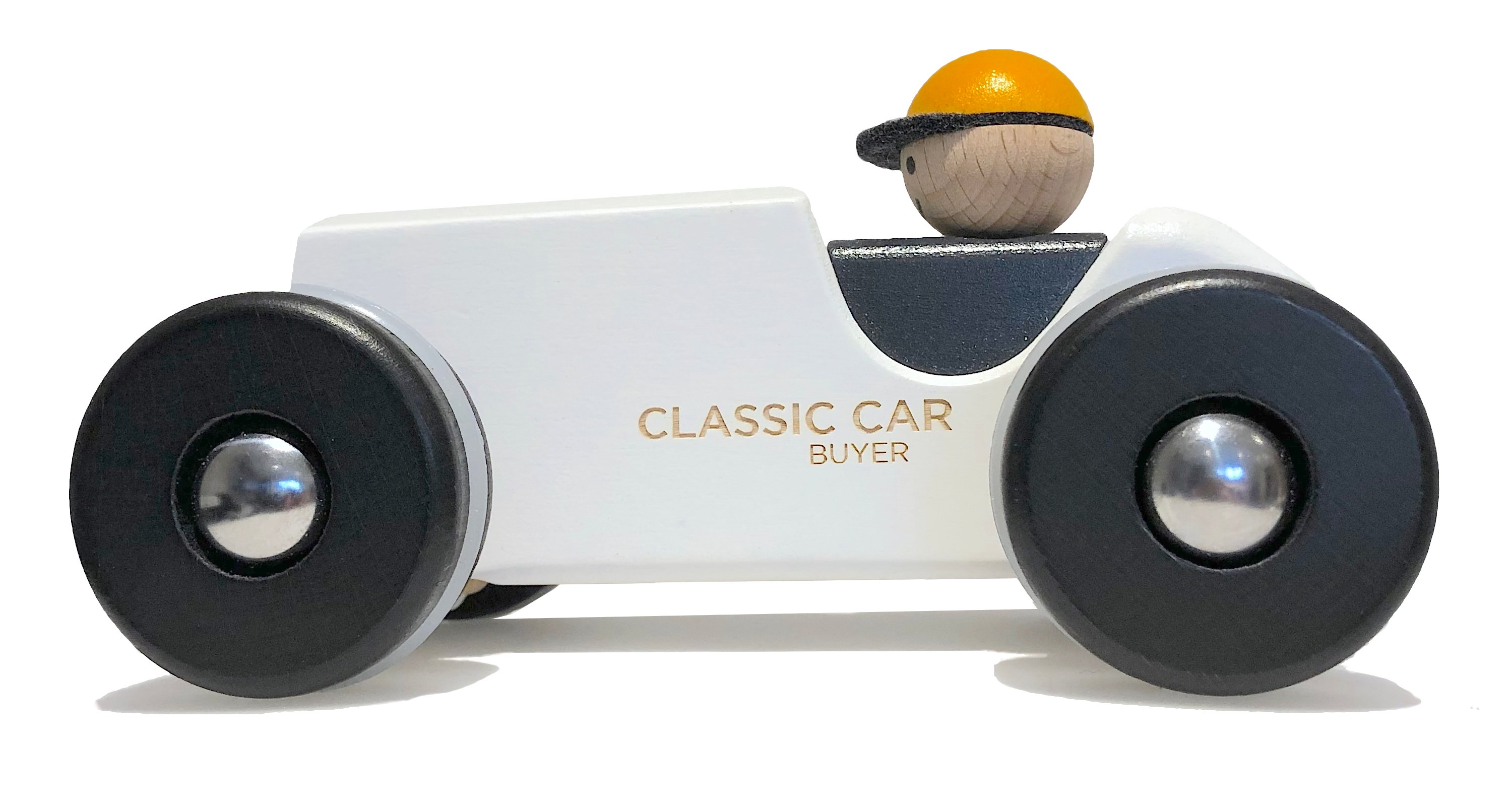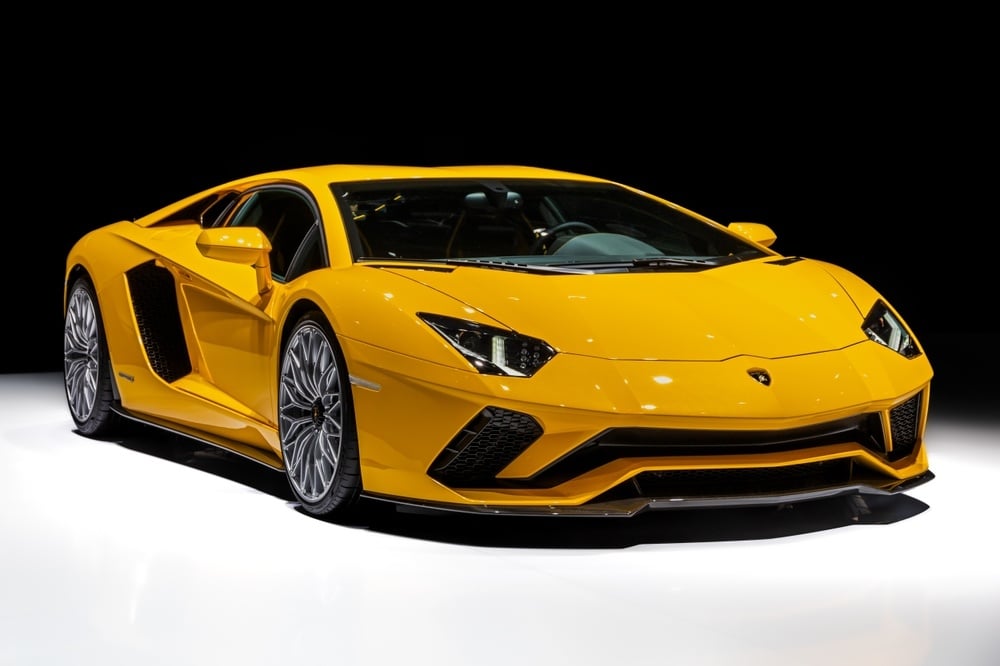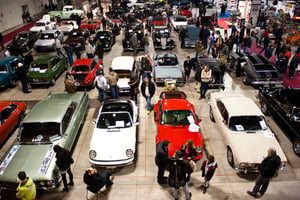Thanks to your amazing response, we've created a dedicated website to help you explore Britain's...
If you were asked, right now, to picture a Lamborghini in your mind, perhaps you’d conjure up an image of sleek lines, a roaring engine and a striking body colour. In essence, a highly-coveted, high-performance machine. But what if I told you that the founding company behind one of the most exotic supercars in the world actually started out making tractors? There’s obviously a bit of history here to discover! Let’s have a look at the fascinating journey of Lamborghini, a brand that has come to symbolise pure speed, luxury and the ultimate in Italian flair.
Lamborghini’s story begins with its founder, Ferruccio Lamborghini, born in Italy in 1916. After World War II, he set up a business manufacturing tractors from surplus military equipment. His company, Lamborghini Trattori, was a success, and Ferruccio became a wealthy man. But there was one thing that started to bother him - his Ferrari.
Ferruccio Lamborghini was a huge fan of cars, and like any well-to-do Italian gentleman of the time, he owned a Ferrari. But after finding a few issues with his car’s clutch, he had a suggestion on how it could be improved. He drove to the neighbouring village of Maranello and knocked on the door of Enzo Ferrari himself. Ferruccio found himself at odds with Ferrari, after being told to stick to tractors and to leave sports cars to the professionals. Yikes. That snub lit a fire in Ferruccio, leaving him thinking that if Ferrari wouldn’t listen to him, he’d just build his own car instead – and it would be better.

In 1963, Automobili Lamborghini was born, with the aim of creating grand touring cars that would outshine Ferrari. The first Lamborghini model, the 350 GTV, was unveiled that same year at the Turin Auto Show. Although it was a prototype, and not particularly successful due to its futuristic style, the car still made a strong statement - that Lamborghini had arrived. The GTV was followed by the 350 GT - a fast, elegant two seater which achieved good sales - and then in 1966 by the 400 GT. The oil crisis in 1973, and the sore state of the economy, meant that Ferruccio sold the company the next year, and subsequently retired to his lake house to start producing small batches of wine. After bankruptcy and several changes of hands, the Volkswagen Group took the company on, and to this day it sits under the Audi subsidiary.
Lamborghini cars are famed not only for their style but for the powerful engines and advanced engineering that go into each model:
Engines
Lamborghini engines are masterpieces of design, performance and sound. Early models were fitted with V12 engines designed by Giotto Bizzarrini, the same man who had previously worked on Ferrari engines. The V12 remained a signature feature for years, becoming synonymous with the Lamborghini’s performance on the road.
Design
One look at a Lamborghini, and you’re hooked. Over the years, Lamborghini has worked with some of the most renowned car designers, including Marcello Gandini, who designed the classic Miura and Countach. These designs were often revolutionary – the Miura, for instance, is often considered the first true ‘supercar’ thanks to its mid-engine layout.
All-wheel drive
Lamborghini was one of the first car manufacturers to use all-wheel drive in high-performance sports cars, which began with the Lamborghini Diablo VT in 1993. This innovation provided greater stability and control at high speeds, helping drivers manage the immense power the cars generated.
Aventador’s carbon-fibre monocoque
With the Aventador, Lamborghini embraced cutting-edge materials. Its carbon-fibre monocoque chassis (where the body and chassis are combined into a single unit) is not only incredibly strong but lightweight, improving both safety and speed.

Essentially, Lamborghini has produced some of the most iconic cars in automotive history. Here are a few:
Lamborghini Miura (1966)
The Miura was revolutionary, both in terms of its mid-engine layout and its jaw-dropping looks. It’s widely considered the world’s first supercar, and set the standard for future performance vehicles.
Lamborghini Countach (1974)
The Countach - meaning ‘wow’ in Italian - is the poster child for the outlandish 1970s supercar. With its sharp, angular lines and those famous scissor doors, the Countach became a symbol of extravagance and engineering prowess. The car could hit top speeds of over 186 mph, making it one of the fastest cars of its time.

Lamborghini Diablo (1990)
The Diablo was Lamborghini’s first car capable of exceeding 200 mph. Its sleek design and the monstrous V12 engine made it an instant classic. The Diablo also marked the beginning of Lamborghini’s use of advanced electronics, paving the way for more advanced supercars.
Lamborghini Murciélago (2001)
The Murciélago marked the beginning of a new era under the ownership of Audi. With more refined technology, all-wheel drive, and a body made from a combination of carbon fibre and steel, it was both a beast on the road and surprisingly comfortable for a supercar.
Lamborghini Aventador (2011)
The Aventador is a modern masterpiece, continuing Lamborghini’s tradition of V12 engines and aggressive styling. With a top speed of c.218 mph and the ability to go from zero to sixty in under three seconds, the Aventador is the pinnacle of Lamborghini engineering.
That’s a pretty cool history for a car brand, you might say - and a lot of action and change. Here’s a few more interesting facts:
The Bull symbol
Lamborghini’s iconic bull logo isn’t just for show. Ferruccio Lamborghini was a Taurus, and his love for bullfighting inspired the emblem. Many of Lamborghini’s car names also reflect this theme, with models like the Miura, Gallardo, and Murciélago named after famous breeds of, or even individual, fighting bulls.

The Aventador’s start
When you start up a Lamborghini Aventador, you press a button hidden under a red cover, just like you’re firing a missile. It’s the perfect metaphor for what’s about to happen under the bonnet!
Late to the turbo party
Unlike many modern supercars, Lamborghini traditionally avoided turbocharging. Instead, they tended to stick with naturally aspirated engines, which may not have had as much torque but provided a smoother and more responsive driving experience. However, with some of the newer models they’ve embraced turbocharging to suit the needs of this different segment.

Today, Lamborghini continues to innovate. The introduction of the Lamborghini Urus in 2018 marked its first launch into the luxury SUV market, blending the performance of a supercar with the practicality of an SUV. It was a move that purists might have scoffed at initially, but it has become a massive success, helping Lamborghini reach new audiences.
From humble tractor beginnings to becoming a leader in the supercar world, Lamborghini’s history is one of innovation and pushing the boundaries of what’s possible. So, the next time you hear the roar of a Lamborghini engine or see one blaze past on the motorway, remember – it all started with a tractor (and an argument about clutches)…








